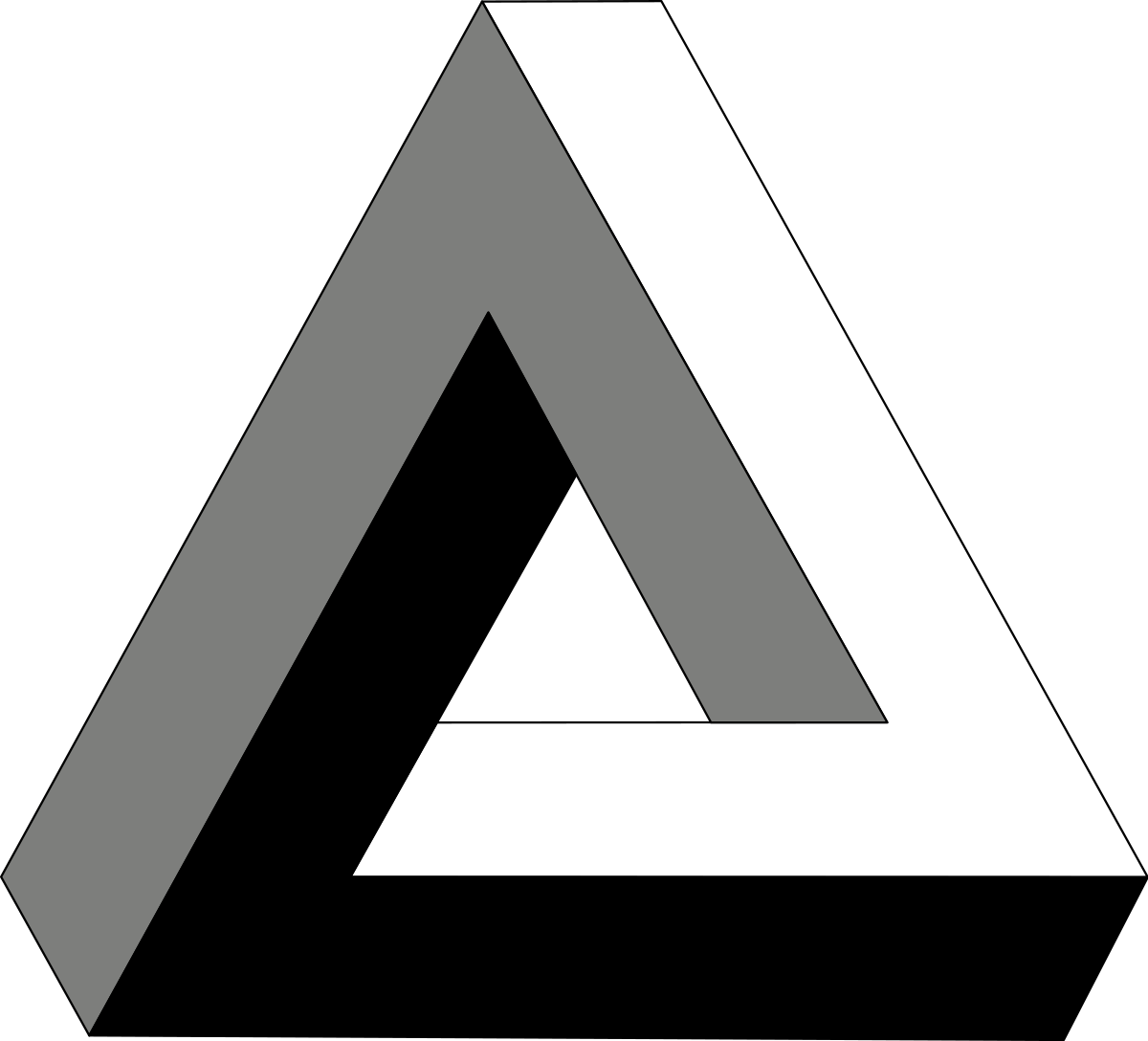Paradoxes come from reifying representations
by Hazard

From Anthony Wilden on paradoxes:
In the impossible object, a single jump in dimensions is made and unmade and remade ad infinitum by the paradoxical command about the third dimension implicit in the image of the triangle. The coded cues about dimension in one part of the image are switched into a conflicting code in another part. […] For people and societies that have not decided (collectively) and learned (individually) to see three dimensions in two-dimensional pictures, the paradox of the imaginary triangle does not exist1. […] What we have learned about reading dimensions into pictures we cannot unlearn later on.
As with most representations, there is not some correspondence cop following you around who will alert you when making a perfectly allowable move in representation space doesn’t actually correspond to something real in the domain you’re trying to represent. I can draw a picture of my closet and a picture of my car inside the closet, even though the things they represent wouldn’t fit inside each other. The substrate of representation is not bound by the same rules as that which is being represented. They are necessarily different, in order for representations to be more lightweight than reality itself, and that means making decisions about which subset of the rules of the territory you will try to enforce on the substrate of your representation, and which you will ignore.
A framework or representation schema cannot be “paradoxical” on it’s own. It can contain a contradiction, two things that assert the impossibility of each other, but it’s not until you have notion that “because they’re both in my framework, they must both be correct” that there is a paradox. If I write on a note-card “I am 10 years old” and “I am 80 years old”, it generally wouldn’t be considered a paradox because no one was expecting random words I wrote on a note-card to all be true.
This paradox cannot be resolved as long as the frame that creates and maintains it is accepted as unalterable and real.
Paradoxes can never actually be, and contradictions are resolved by Jumping Out Of The Frame.
Susceptibility to various optical illusions does vary by culture, but it’s not entirely an artifact of culture. The Ames Window illusion is more convincing when one has grown up in “carpentered environments”, but its not an on/off switch. You can also tweak the illusion for greater convincingness across the board.↩︎